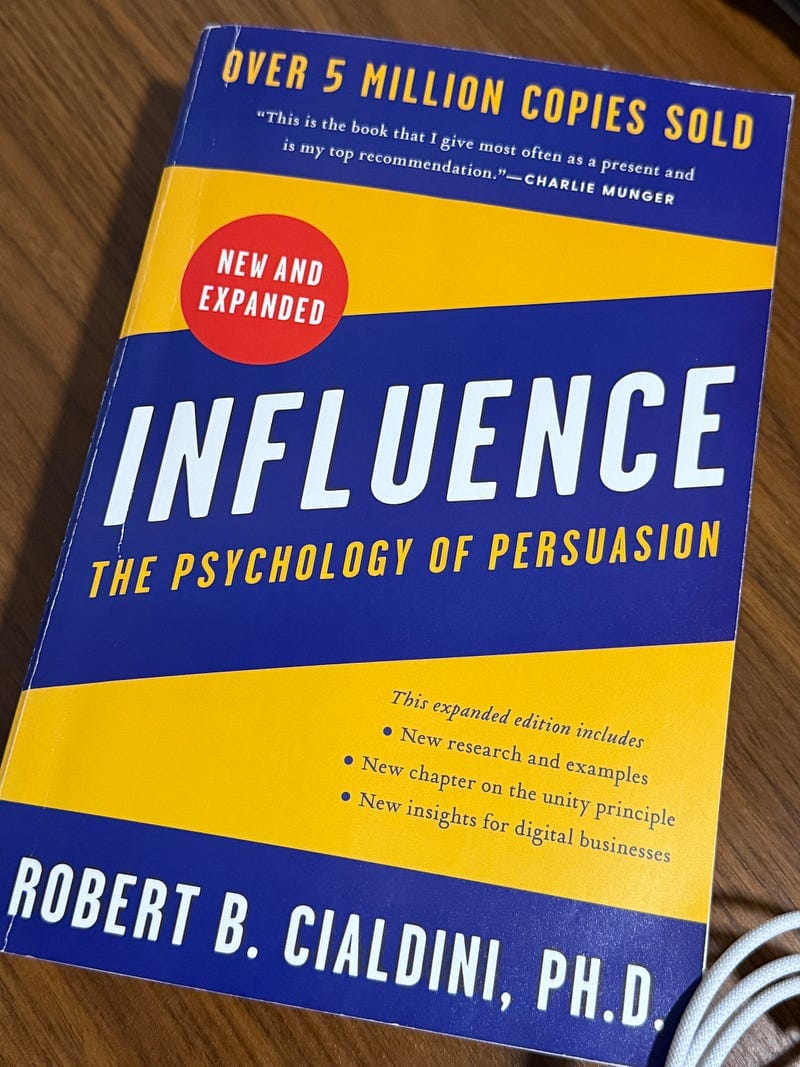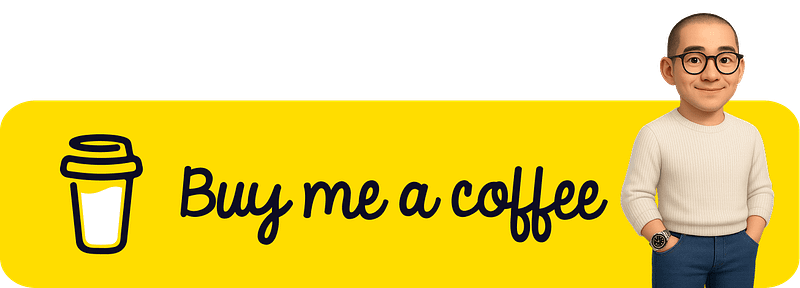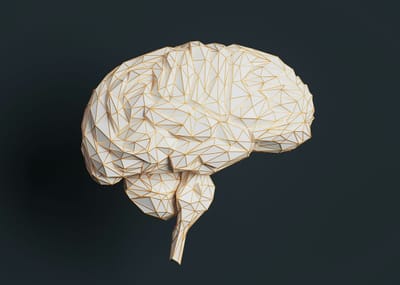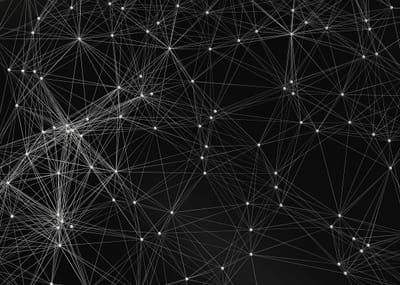
How Automatic Decisions Control Your Choices
It’s late, you’re running on fumes, and the decisions keep coming. A pop-up flashes “Hurry! Only 1 left in stock!” and without thinking, you click Buy Now. Later, you wonder, “Why was I so quick to comply?” This half-conscious autopilot drives Cialdini’s Chapter 9. In an age of information overload and split-second choices, our minds often seek refuge in quick instincts. Sometimes those instincts save time; other times, they lead us straight into a trap. Let’s explore how we’re wired for instant influence, and what that means in a world where everyone from marketers to manipulators is vying for our automatic “yes.”
Summary
The chapter opens with a sharp little drama from a 1960s talk show. Host Joe Pyne, known for his abrasive style (and a wooden leg), eyes Frank Zappa’s long hair and sneers, “I guess your long hair makes you a girl.” Zappa, unfazed, shoots back, “I guess your wooden leg makes you a table.” Beyond the laugh, this exchange nails the chapter’s theme: how snap judgments based on a single feature can misfire. Pyne tried to reduce a person to one cue (appearance) and ended up looking foolish himself. Cialdini uses this to illustrate our habit of grabbing onto one prominent piece of information and running with it, especially when deciding quickly.
From there, the chapter unfolds a story that feels all too familiar in modern life. We are blitzed with more information and choices than ever. Hundreds of emails, endless social media feeds, products, and promises everywhere. It’s overwhelming. So, like a harried parent on autopilot, we default to mental shortcuts. Instead of painstakingly analyzing every detail, we focus on one reliable cue and make a split-second decision. Did an email subject line say “URGENT”? We respond without digging deeper. See a line outside a new restaurant? We assume it’s great and step in line too. Hear a voice of authority or a claim of “90% of people recommend…”? We nod along. In Cialdini’s words, our sophisticated brains often “retreat…to a more automatic, primitive, single-feature type of responding” when pressed. He even calls this quick compliance primitive consent, a kind of knee-jerk “OK, fine” reflex that bypasses full thinking.
The chapter doesn’t paint this as pure weakness; it’s portrayed as a necessary adaptation. Modern existence is fast-paced and overloaded: “so complex, fast-paced, and information-laden that we must increasingly deal with it in the fashion of the animals we long ago transcended.” Ouch! It stings our pride, but it rings true. Just as a mother turkey instinctively responds to a “cheep-cheep” sound without deliberation, we humans have our own click, whirr behaviors (as introduced back in Chapter 1). We’ve developed automatic triggers — think of Cialdini’s six weapons of influence (reciprocity, consistency, social proof, liking, authority, scarcity) — that usually steer us right quickly and with minimal effort.
But there’s a dark twist. Those very same trusty shortcuts can be misleading or misused. Chapter 9 shines a light on how clever compliance professionals play on our automatic tendencies. When a normally reliable cue is faked or rigged, our primitive consent mechanism can betray us. An unscrupulous advertiser might simulate popularity for a junk product, for example, by staging fake “customer testimonials” or phony “#1 Best Seller!” badges, hoping we’ll take the bait. A con artist might don a white lab coat to trigger our authority bias, or use urgent language (“Act now! Limited time!”) to hijack our scarcity trigger. Cialdini warns that as we rely more on these fast cues, the “frequency of trickery” by exploiters is bound to increase in step. In other words, the more we operate on autopilot, the more tempting we become as targets for those who know how our autopilot works.
Importantly, Cialdini doesn’t condemn all influence triggers. In fact, he calls them our allies when used honestly. The nuance is critical: a salesperson truthfully saying “this is our most popular model” helps us with a valid shortcut, but one who lies about popularity hurts us. He makes a clear distinction: compliance practitioners who “play fair” with genuine information are not our enemies; they’re cooperating partners in an efficient exchange. The real villains are the ones who “falsify, counterfeit, or misrepresent” those cues. And against those bad actors, Cialdini urges something more than just casual skepticism. He urges action.
The chapter crescendos into a call for vigilance and even retaliation. Cialdini’s tone turns from analytical to almost combative, imploring us to fight back to defend our mental shortcuts from abuse. He suggests bold responses. If a TV show uses canned laughter to fabricate social proof, refuse to watch it. If a bartender salts the tip jar with their own money to simulate popularity, give them no tip. If a nightclub tricks people with an artificially long line outside, walk away and make sure others know why. His rationale is emotional and striking: our shortcuts — those little one-click habits of trust — are “not luxuries any longer; they are out-and-out necessities” in coping with daily life. If we allow profiteers to constantly booby-trap those shortcuts with false signals, we’ll lose faith in them and end up exhausted, doubting every decision. Thus, Cialdini argues, we “cannot allow that without a fight. The stakes have gotten too high.”
In story form, Chapter 9 is the tale of a double-edged sword. Our automatic yeses are trusty tools we rely on daily to navigate chaos. Used well, it simplifies life; used poorly (or deviously), it can cut us. Cialdini’s conclusion lands with both a warning and a rallying cry: understand your shortcuts, guard them fiercely, and don’t let anyone weaponize your automatic goodwill against you.
Core Ideas
Automatic Compliance & “Click, Whirr” Behavior
Much of this chapter revolves around the idea that humans often behave automatically in response to certain triggers, much like simpler animals do. Early in the book, Cialdini likened this to a tape recorder (yes, the metaphor is dated!): you hit the right “click” trigger and out rolls the programmed behavior—whirr, off it goes. In Chapter 9, he returns to this concept, noting that very often we make decisions based on a single cue instead of a full analysis. We might not realize it, but our brains have a catalog of pre-set influence triggers: a lone feature of a situation (like a specific phrasing, a color, a symbol of authority) can flip a switch in us that says “Do X now.” For example, the word “Because…” in a request can automatically increase compliance (as seen in an earlier chapter’s study), or seeing an item marked as “Exclusive” can immediately spark desire. This automaticity is our mind’s way of saving time and energy. We rarely deliberate. Instead, we respond instinctively to a single, prominent cue.
Heuristic Decision-Making in a Fast World
Cialdini places our shortcut habit in the context of modern life. The term “heuristic” isn’t used explicitly in the chapter, but that’s exactly what these shortcuts are — heuristics, or rules of thumb, that simplify decision-making. Why do we need them? Because we’re cognitive misers with limited time. Our brains, mighty as they are, can’t consciously process the avalanche of data we face every day. As the chapter notes, we have created a world so complex and fast-paced that our Stone-Age decision mechanisms struggle to keep up. The result: we increasingly rely on simplification. If we’re rushed, stressed, or just plain tired, we grab the most obvious piece of “good evidence” and base our choice on that. In essence, we let System 1 (to borrow Daniel Kahneman’s term) take over — the fast, automatic, gut-level thinking — because System 2 (the slow, effortful analysis) doesn’t have the bandwidth to scrutinize every detail. This isn’t inherently bad; in fact, these heuristics usually point us in the right direction because they’re grounded in experience. Each of Cialdini’s six principles of influence is popular because it offers a reliable shortcut: if many others say a restaurant is good, it’s probably good (social proof); if an expert doctor gives health advice, it’s likely sound (authority); if an item is scarce or in demand, it often has value (scarcity), and so on. These mental rules work much of the time. They are our brain’s way of outsourcing judgment to the wisdom of collective patterns. A kind of evolutionary life hack for decision-making.
The Risk of Misused Shortcuts
The flipside, and core warning of Chapter 9, is that heuristics can be hacked. Our shortcut responses are primitive in the sense that they bypass critical thought, so if someone feeds them the wrong input, they’ll still spit out the same output. Cialdini emphasizes how “an isolated piece of information, even though it normally counsels us correctly, can lead to stupid mistakes” when it’s false or misrepresentative. And in those moments, we can be made to look “silly or worse.” Throughout Influence, we saw how each principle of influence can be abused: think of fake social proof (hiring people to pose as a crowd of excited buyers), phony experts (actors in lab coats selling toothpaste), manufactured scarcity (claiming “only 5 left!” when the warehouse is full), and so on. Cialdini labels such deceitful tactics “counterfeit cues.” Under normal conditions, a single cue like popularity or urgency is helpful. But when a compliance professional tricks that cue, essentially counterfeiting the signal our brain is looking for, we can be led into erroneous actions and wrongheaded decisions. The chapter drives home that the mechanical nature of our shortcut response (our tendency to obey the cue without further thought) is exactly what certain marketers, salespeople, or propagandists prey upon. And as we lean more on quick decisions, the incentive for tricksters to supply fake triggers grows. It’s an arms race: our need for speed versus their desire for profit.
Ethical Influence vs. Exploitation
A key idea Cialdini stresses is that shortcuts themselves aren’t the enemy. In fact, they are crucial for an “efficient and adaptive process of exchange” in society. We couldn’t possibly verify every claim or weigh every option fully; if we tried, life would grind to a halt. So we have to trust certain signals. Recognizing this, Cialdini actually defends the ethical use of influence principles. A salesperson pointing out a genuine best-seller, or a public service announcement using a real authority figure to give advice — these are examples of using our shortcuts as they were intended. The distinction lies in honesty and authenticity. The chapter effectively divides persuaders into two camps: those who play by the natural rules (providing accurate cues and thus helping us make good choices quickly) versus those who cheat (fabricating or faking cues to get us to choose in their interest). It’s the difference between guiding and manipulating. Cialdini argues that we shouldn’t be mad about the existence of shortcuts or those who use them fairly. If anything, we might thank them for simplifying decisions. But when we catch someone gaming the system, say, using a laugh track to make a mediocre sitcom seem funnier, or paying for fake reviews on a product, that’s where we should draw the line.
The Need for Defense and “Counterassault”
The final core idea is a proactive one. Given that the abuse of influence shortcuts is both common and likely growing, what do we do about it? Cialdini’s answer isn’t a meek “be careful”; it’s a rallying call for a mindset shift from passive consumer to active guardian. He uses strong language, suggesting we all are “in a war” (in a psychological sense) with exploitative influencers. While that sounds dramatic, he justifies it by saying our mental shortcuts are precious assets, they allow us to function in this crazy modern world. If those assets get corrupted by constant exploitation, we all lose. So he advocates not just dodging manipulative tactics but punishing them in the marketplace. In practical terms, that means withholding the reward (our money, attention, compliance) from anyone who uses deception. If an advertisement lies to you, don’t buy the product, maybe even call out the lie. If a business uses sleazy tricks, walk away and let others know. Essentially, shine light on the manipulation so it backfires on the manipulator. By doing so, we protect the integrity of genuine cues. This idea introduces a moral element to consumer behavior. It’s not only about saving yourself from a bad decision; it’s about sending a message that trickery won’t be tolerated, thereby keeping the playing field honest for everyone. Cialdini believes that only through such collective pushback can we ensure our beloved shortcuts remain useful and trustworthy. As he notes, we have every incentive to retaliate when our “rules of thumb” are betrayed, because our daily sanity and decision-making efficiency depend on them.
In summary, the core ideas of Chapter 9 weave a narrative of human minds on autopilot: why we need that autopilot, how it usually serves us well, how it can be hijacked, and why we must guard it in an age that pressures us to decide now. It’s a fitting conclusion to Influence, reminding us that knowledge of these principles is itself a powerful defense. Once you see the puppet strings, even the ones tied to your own automatic reactions, you’re far less likely to dance when a manipulator pulls them.
Personal Insights
Reading “Instant Influence” made me uncomfortably aware of just how often I live on mental autopilot. One personal example still makes me cringe: a few years ago, I wandered into an electronics store “just to browse.” I was tired after work, my brain on low-power mode. Almost immediately, a big red sign caught my eye: “Today Only! 50% OFF! Limited Stock!” on a fancy pair of headphones. There was no real analysis in my head, no comparing prices or reading reviews. The sign yelled urgency and rarity, and automatically, my hand grabbed a box. I bought them on the spot. It was only later, at home, that reality set in. The headphones weren’t even that great. I felt a bit duped and embarrassed, not because the product was awful, but because I recognized that I hadn’t really chosen at all. A scarcity cue (“limited stock”) plus a dash of loss aversion (“today only discount”) had chosen for me. My autopilot had kicked in, and I complied like a well-trained consumer. Reflecting on it, I realized how vulnerable we are when we’re mentally exhausted or distracted. That’s when the shortcuts take over, for better or worse. Now, when I see screaming sale signs, I actually chuckle at myself, “Alright, what’s the trick here? Let’s not fall for the neon lights this time.” That little moment of self-awareness can break the spell.
I’ve also seen the power of these automatic levers in my professional life. I once had a manager who, I swear, hacked our compliance triggers as a matter of routine. He’d pepper requests with phrases like “I got this info from the Director” or “Company says we need this”, pulling the authority lever to make us all nod along without question. And it worked; we often went along with plans that didn’t make much sense, simply because some higher-up’s name was invoked. In hindsight, it irked me how reflexively I’d agree, as if a part of me thought, “Well, if the big boss said so, it must be right.” After reading Cialdini, I started catching myself. In meetings, whenever this manager dropped an authority cue, I’d feel that immediate compliance impulse… and then I’d force a pause. I learned to ask (politely), “Did the Director explain why this is needed?” or “Do we have data on this, or is it just a directive?” The first time I did that, my heart pounded, and I broke the spell, and nothing bad happened. In fact, it led to a more reasoned discussion. This taught me two things: one, how deeply ingrained some of these obedience triggers are in a workplace hierarchy; and two, that questioning a trigger doesn’t cause the sky to fall. That moment felt empowering, like I had taken back control of my decision-making process instead of being a rubber stamp.
On a more humorous note, I can’t help but recall an observation from a friend that perfectly illustrates primitive consent. He worked at a trendy bar, and on slow nights, the staff had a trick. They plant a few “cool-looking” people at the window and by the entrance. Passersby would see a crowd (manufactured, of course) and assume the place was buzzing. And lo and behold, people would drift in, not wanting to miss out on the action. My friend admitted feeling a bit guilty, it was a ploy, pure and simple. But it filled the bar. When I first heard this, I shrugged it off as clever marketing. After reading Influence, I see it in a new light. It’s basically weaponized social proof. Those passersby weren’t really deciding to go have a drink; a shortcut in their heads (“if others are there, it must be good”) decided for them. Now, when I’m out and see a mysteriously long line or a packed-looking venue, I genuinely wonder: Is this place actually great, or am I being programmed by a crowd that might not even be real? I haven’t gone so far as to walk up and ask: “Hey, are you all really customers or are you planted?”. That would be awkward! But I do sometimes peek inside to see if the vibe matches the hype. It’s a small act of rebellion against my own gullibility.
Perhaps the biggest personal insight I’ve gained is a mix of humility and skepticism about myself. It’s easy to think, “I’m too smart to be tricked by ads or sales tactics.” Chapter 9 was a friendly slap in the face, reminding me that intelligence often has nothing to do with it. When I’m on autopilot, my primal reactions don’t consult my IQ. They just fired. And that’s okay. It’s human. I don’t berate myself for having a reflex; I just try to be more aware of when a reflex is happening. Spotting influence attempts has become a daily game for me. When a charity caller on the phone starts with a long, sympathetic story (tugging at liking and sympathy), I notice my urge to say “sure, sure”, and I consciously engage my brain to ask questions. When a website pops up “Other shoppers are looking at this item right now!” (classic social proof pressure), I feel that little FOMO twinge, but then I smile and scroll past unless I truly want the item. This awareness actually makes me feel more in control and oddly more connected to others, because I know we all share these quirks. We’re all busy, a bit overwhelmed, trying to make good choices in a sea of information. Of course, we latch onto shortcuts. Chapter 9 just helped put a name and a frame to what I was experiencing. Now, when I catch myself or someone else in a moment of primitive consent, I don’t see stupidity; I see a story playing out — one Cialdini narrated — of a fundamentally smart brain doing the best it can under the circumstances. And armed with that understanding, I feel a bit better equipped to steer that story to a better ending.
Practical Applications
Reading about these principles is one thing, but applying them is the real test. How can we spot manipulation in the moment and resist being auto-piloted by compliance professionals (or anyone trying to influence us)? Here are a few habits and mindset shifts that I’ve found helpful, inspired directly by Cialdini’s advice and my own trial and error:
Pause When You Feel Pushed
The instant you sense that rush, whether it’s excitement (e.g., a “limited offer” adrenaline kick) or anxiety (e.g., “oh no, I’ll miss out if I don’t act”) — use that as a signal to pause. Our autopilot thrives on urgency and distraction. Simply taking a breath or saying, “Give me a minute,” short-circuits the automatic loop. I’ve started instituting a personal rule: any purchase or commitment that claims it’s “now or never,” I walk away, even if just for five minutes. Nine out of ten times, that short break reveals whether the urgency was real or just a ploy. It’s amazing how many “one-time” deals miraculously remain available once you’re not under their spell.
Name the Lever Being Pulled
One powerful trick to defend yourself is to mentally identify which principle of influence might be in play. Is this person trying to invoke authority (mentioning degrees, titles, “expert studies” with no details)? Are you feeling swayed by social proof (“everyone’s doing this!”) or liking (the influencer is super charismatic or relatable)? By naming the tactic, you transform from a reactor to an observer. It’s like stepping out of your own head for a moment and seeing the gears turning. I literally sometimes think, “Alright, that’s the scarcity card they’re playing,” and it immediately makes me more skeptical. It’s much harder to fool someone who’s watching the magic trick unfold rather than fixating on the magic. This habit turns each potential manipulation into a little puzzle: once you spot the puppet strings, the puppeteer loses much of their power.
Check for Authenticity
Not all influence attempts are malicious. Remember, sometimes a shortcut cue is honest information. So, when you notice a trigger, do a quick authenticity test. If a product brags “#1 Bestselling!”, can you find actual evidence? (Maybe it really is a top seller in some category, or maybe that label is meaningless fluff.) If an email implores you to act “because [important person] said so,” verify it, did they really? In practice, this might mean asking follow-up questions: “Oh, this is a limited offer? When does it end, and will there truly be no other chance?” or “You say all my neighbors signed up, can I talk to one of them about their experience?” A legit operator will usually welcome the questions (or at least handle them calmly), whereas a manipulator will get evasive or pushy. Honest cues stand up to a bit of poking; fake ones tend to deflate quickly.
Reward the Good, Punish the Bad
This idea comes straight from Cialdini’s passionate plea. Make it part of your mindset to support businesses and people who influence ethically, and pointedly withdraw support from those who don’t. It can be as simple as choosing not to buy the gadget with the outrageously fake infomercial or unfollowing the social media personality who constantly uses clickbait fear tactics. On the flip side, if a company or individual provides useful, truthful shortcuts (like a product page that transparently shows both good and bad reviews, or a speaker who cites sources accurately), acknowledge that. They’re respecting your right to make an informed, quick decision. I’ve made it a habit, for instance, to immediately close web pages that hit me with manipulative pop-ups (“WAIT! Don’t go! 70% off if you buy in the next 30 seconds!” you know the ones). They’ve lost me right there. Meanwhile, I’ll happily engage with a site that gives me information and lets me decide at my own pace. Essentially, vote with your wallet and attention. It sends a small signal into the marketplace that we notice the difference between genuine persuasion and cheap trickery.
Educate and Share
One practical step that’s often overlooked is simply talking about these tactics with others. There’s a reason Cialdini’s final message isn’t just “watch out for this stuff” but also “spread the word”. When you discuss a scam email with your family (“Hey, I got this phishing call that sounded just like a bank authority. Watch out for that!”) or explain to a friend why you didn’t fall for that “too good to be true” sale, you’re helping build a community defense. I’ve found that swapping these stories not only helps others but reinforces my own resolve. It creates a kind of informal network of skepticism, which is especially useful in the era of viral misinformation. The more people around you who know about reciprocity tricks or social proof fabrications, the less alone you are in resisting them. Even at work, I’ve gently brought up, “You know, a lot of us felt pressured by that deadline. It might have just been a tactic,” and surprisingly, colleagues often agree and feel relieved that someone said it. Knowledge really is power here. The wider you cast that knowledge, the harder you make it for would-be manipulators to find easy prey.
Adopting these habits isn’t about becoming paranoid or cynical. It’s about cultivating a healthy vigilance. I liken it to installing a spam filter in your mind. You let the good, genuine messages through, but catch the suspicious ones and inspect them before acting. Over time, it becomes second nature. You can still enjoy a good deal or follow expert advice; you’re just making sure it’s real. The goal isn’t to say “no” to everything. It’s to say “yes” on your own terms, with your eyes open. In the end, the best defense against being manipulated is confidence in your own discernment. When you trust that you can spot a fake cue, you won’t live in fear of influence attempts. You’ll engage with the world’s persuasion efforts with a kind of amused awareness, picking and choosing which buttons to let be pressed and which to protect.
Additional Resources
For those intrigued by the psychology of our automatic decisions and how to guard against their pitfalls, here are some excellent books and studies that complement Chapter 9’s insights:
- Thinking, Fast and Slow by Daniel Kahneman — A masterwork by a Nobel-winning psychologist, exploring the dual systems of the mind. System 1 is our fast, automatic, heuristic-driven mode (the very definition of “primitive consent”), and System 2 is our slow, effortful, analytical mode. Kahneman dives into how these systems shape our judgments and biases, offering deep insight into why we often trust shortcuts and when they lead us astray.
- Predictably Irrational by Dan Ariely — A behavioral economist’s lively tour through the irrational quirks of our decision-making. Ariely shows through experiments that our departures from logic aren’t random — they’re systematic and, yes, predictable. This book expands on the idea that we use mental shortcuts (and sometimes miscalculations) in everything from shopping to choosing relationships, and it offers tips on recognizing these patterns in ourselves.
- Pre-Suasion by Robert Cialdini — In this follow-up to Influence, Cialdini reveals a new facet of persuasion: the moments before a message is delivered. It’s all about how setting the stage and directing someone’s attention can prime them to say “yes” before they even realize it. This aligns with the automatic influence theme, showing that context and timing can trigger our compliance reflexes even before the actual request is made. It’s a fascinating read on how influence professionals create that receptive mindset (and how to be aware of it).
- Blink: The Power of Thinking Without Thinking by Malcolm Gladwell — A pop psychology classic about the power — and perils — of snap judgments. Gladwell shares stories and research on our brain’s ability to make split-second assessments based on thin slices of information. Sometimes these blinks of intuition are amazingly accurate, and other times they lead us into bias (for instance, trusting someone just because they look the part). It’s an engaging exploration of when you can trust your gut and when you might be deceived by it.
- Nudge: Improving Decisions About Health, Wealth, and Happiness by Richard H. Thaler & Cass R. Sunstein — While not about defending against manipulation per se, this book flips the script and shows how understanding our automatic behaviors can be used to guide better choices. It introduces nudge theory, the idea that by subtly tweaking the way options are presented (the “choice architecture”), we can influence behavior for good, without restricting freedom. It’s a friendly cousin to Cialdini’s work, demonstrating that knowing people’s heuristics can lead to solutions like healthier eating or smarter savings, simply by designing choices in a way that works with our instincts. Reading Nudge offers a hopeful counterpoint: these mental shortcuts of ours can be leveraged positively, not just exploited, if we’re thoughtful about it.
Each of these resources builds on the themes of Chapter 9, from the cognitive science behind why we take mental shortcuts, to real-world experiments showing how those shortcuts play out, to strategies for making better decisions in spite of (or thanks to) our natural tendencies. They’ve certainly helped me deepen my understanding of instant influence and how to balance that fast autopilot with a slower, more deliberate co-pilot. Happy reading and stay savvy!
Enjoyed this piece?
If this piece was helpful or resonated with you, you can support my work by buying me a Coffee!

Become a subscriber receive the latest updates in your inbox.






Member discussion